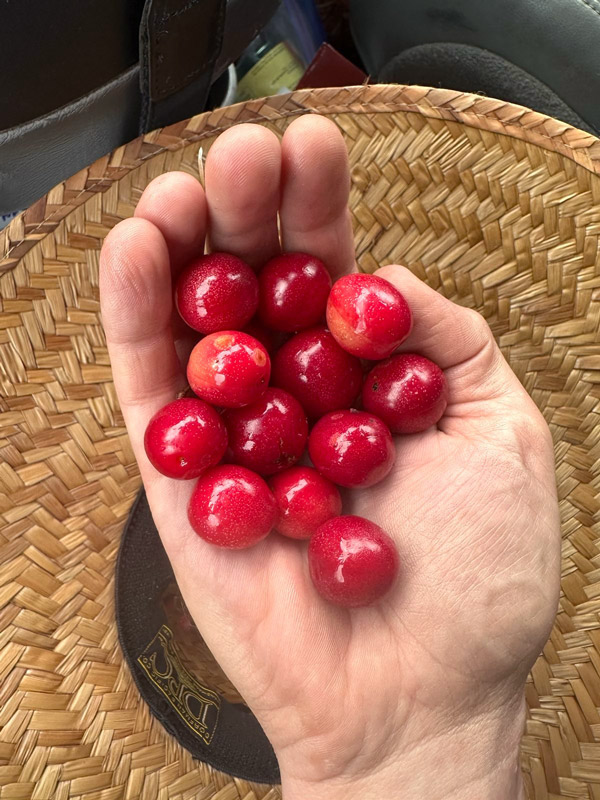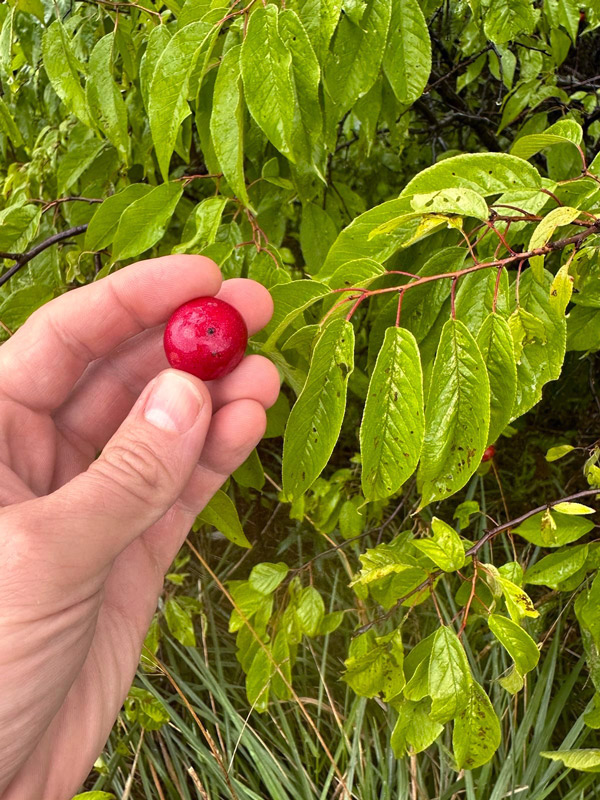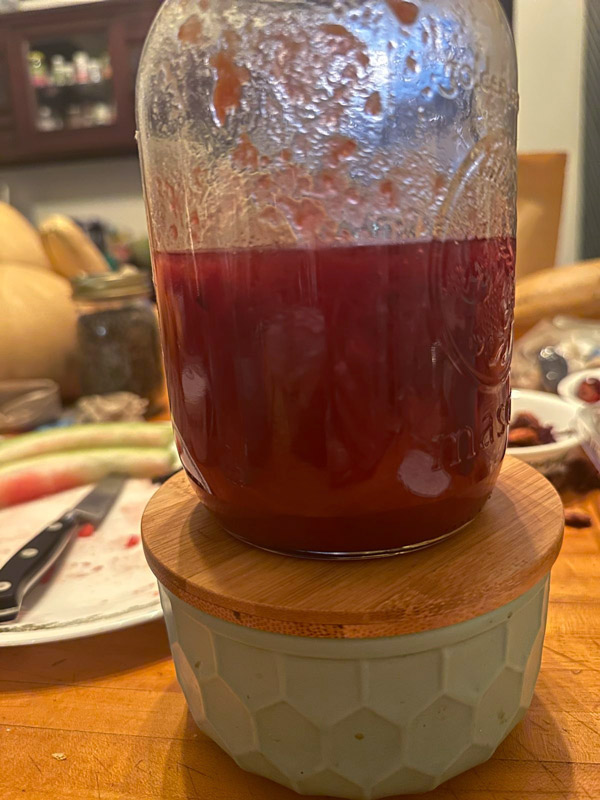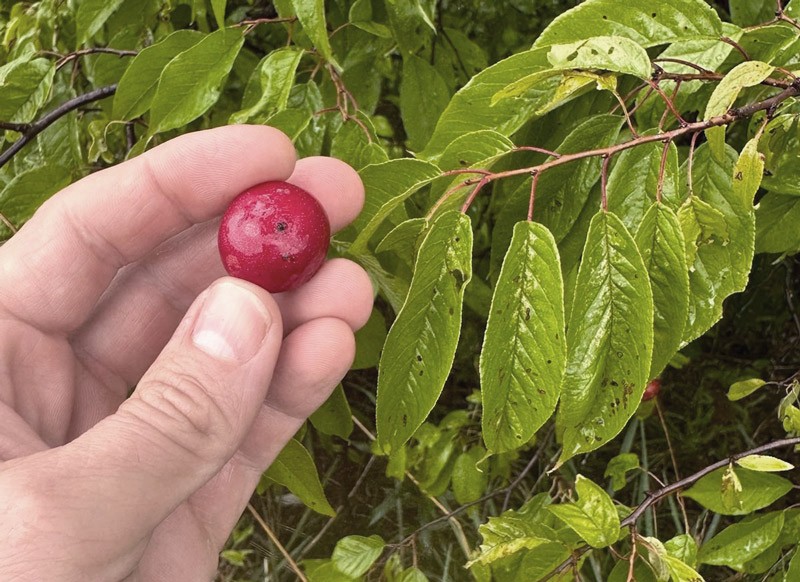In N/C Florida, we used to find a lot of wild plums in two varieties: Chickasaw and flatwoods.
The former we planted in our front yard food forest, and then later grafted onto with multiple different species of plums.
As for the flatwoods plum, we also had a self-planted tree in the side yard which never produced much but looked pretty.
I’ve always been fascinated with wild fruits. Some of them are quite good! We found that to be the case with these wonderful American plums I harvested by the side of the road in Kentucky, just north of the Tennessee border.

We’d never seen this species before, but it was covering the roadside in large patches. After spotting the first few clumps of trees and seeing them hung with red fruits, I had to pull over the van at the next convenient spot and see what sort of fruit they were.
(My wife and children are used to me pulling over the car for random plants. In fact, I think this may be one of the reasons why my teens prefer to drive when we are on long road trips.)
My guess was that they were a crabapple, or perhaps a mayhaw. They were hard and red. I filled my hat and brought it back to the car, then had one of the kids open one of them with my pocketknife while I was driving.
To my delight, it had a pit inside. Wild plum! But it was a species we hadn’t seen in Florida or Alabama. The leaves are much larger than those of the wild plums I’ve seen here, and the fruit is much redder.

Upon some investigation, they are almost certainly Prunus americana.
According to the Lady Bird Johnson Wildflower Center, the American plum is:
“A thicket-forming shrub or small tree with short trunk, many spreading branches, broad crown, showy large white flowers, and red plums. American plum is a small, understory tree to 35 ft. with fragrant, white flowers in showy, flat-topped clusters occuring before the leaves in spring. The fruit that follows ripens to a shiny, bright red in August or September. The short, crooked trunk – with scaly, black bark – supports a graceful, open crown. Fall foliage ranges from electric red to pale yellow.
The plums are eaten fresh and used in jellies and preserves, and are also consumed by many kinds of birds. Numerous cultivated varieties with improved fruit have been developed. A handsome ornamental with large flowers and relatively big fruit, American Plum is also grown for erosion control, spreading by root sprouts.”
That sounds just like what we saw.
When we got home a couple of days later, we ate some of them and found them to be quite good. The ripe ones are sweet with a little tartness. Rachel made most of them into a half-quart of jam, which the children relished.

It was very good!
Of course, we saved all the pits and will be stratifying them in the fridge to see if they will germinate.
We don’t know if they’ll grow here in Lower Alabama, two zones south of where they were thriving, but if they can, we want them in our yard! Apparently their range does extend into the Florida panhandle, so we should be good. If we can get them to grow, we’ll add them to the plant nursery as well.


9 comments
I have these all over my farm in central texas. The birds get to them usually but I’ve always wanted to make something with them. They should grow just fine where you are. Super fun.
TexasFarmer on YouTube
Thank you, Angie.
Kentucky citizen here.
These plums can be easily purchased in bundles of 50 from the Kentucky department of agriculture.
It is where I got mine.
Damson and other plums do well grafted on.
And wow do they sucker well once established!
Easy to harvest suckers and plant where you want new ones.
Mind that they do have spikes or spurs that are very sharp.
Awesome – thank you.
DTG,
Are you familiar with N.C.McKibben variety of chickasaw plum? Bought it from a guy here that raises old varieties of apples, plums, etc.
I am not – I will look it up.
That’s the pits!
If you have too many pits. I can send a Is self-addressed stamped envelope.
[…] summer, we found a marvelous stand of plums fruiting along the highway just north of the Tennessee […]
[…] summer, we found a marvelous stand of plums fruiting along the highway just north of the Tennessee […]
Comments are closed.